Copyright 2016 by Dalila Tarhuni All rights reserved. No part of this book may be reproduced in any manner without the express written consent of the publisher, except in the case of brief excerpts in critical reviews or articles. All inquiries should be addressed to Skyhorse Publishing, 307 West 36th Street, 11th Floor, New York, NY 10018. Skyhorse Publishing books may be purchased in bulk at special discounts for sales promotion, corporate gifts, fund-raising, or educational purposes. Special editions can also be created to specifications. For details, contact the Special Sales Department, Skyhorse Publishing, 307 West 36th Street, 11th Floor, New York, NY 10018 or .
Skyhorse and Skyhorse Publishing are registered trademarks of Skyhorse Publishing, Inc., a Delaware corporation. Visit our website at www.skyhorsepublishing.com. 10 9 8 7 6 5 4 3 2 1 Library of Congress Cataloging-in-Publication Data is available on file. Cover design by Jane Sheppard Cover photo by Dalila Tarhuni Print ISBN: 978-1-5107-0899-0 Ebook ISBN: 978-1-5107-0901-0 Printed in China
CONTENTS

INTRODUCTION: WHY SPIRALIZE? Including plenty of fresh, ideally locally-grown and organic produce in your daily diet is essential for good health and one simple and fun way of achieving that is by spiralizing. A Japanese invention, the spiralizer is a safer version of a mandoline slicer that produces noodle or ribbon-like strands from a variety of vegetables and fruits. Over the last few years, the spiralizers popularity has soared and it has quickly become a must-have kitchen tool, particularly for the health conscious.
Whether you are looking to incorporate more vegetables and fruit in your familys diet or following gluten free, Paleo, or another special diet lifestyle, this wonderful gadget is indispensable and worth investing in. Cutting back on calories and refined carbs in order to achieve or maintain a healthy weight is significantly easier if you substitute rice or grain-based pasta and couscous with spiralized vegetables. The following table shows how the nutritional value of 100 grams (3.5 ounces) cooked spiralized zucchini compares to 100 g (3.5 ounces) cooked couscous, quinoa, white and brown rice, and both wheat and whole wheat spaghetti. 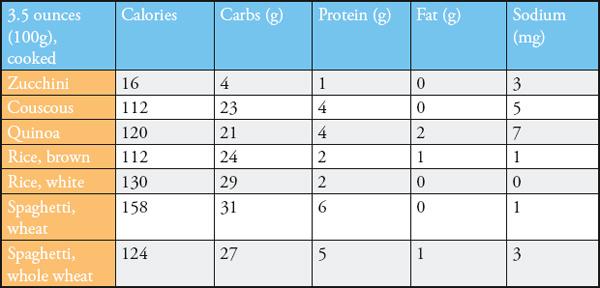
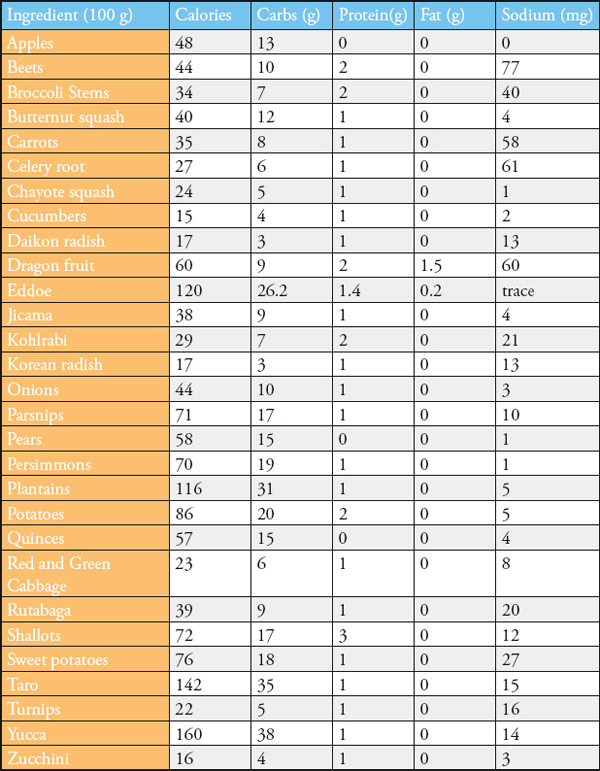 The above nutritional data was calculated using the USDA National Nutrient Database for Standard Reference and is for informational purpose only.
The above nutritional data was calculated using the USDA National Nutrient Database for Standard Reference and is for informational purpose only. 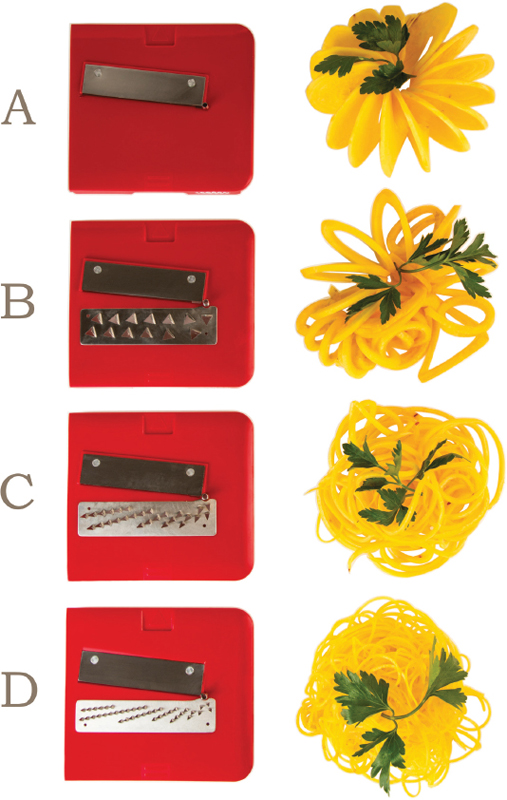 BLADE TYPES AND USES Although there is a huge variety of spiralizers on the market, most of them come with three to five stainless-steel blades, either adjustable or interchangeable, that include a straight/flat blade and shredding blades in different sizes. Some of the smaller, hand-held spiralizers/vegetable cutters come with two sizes of julienne blades only.
BLADE TYPES AND USES Although there is a huge variety of spiralizers on the market, most of them come with three to five stainless-steel blades, either adjustable or interchangeable, that include a straight/flat blade and shredding blades in different sizes. Some of the smaller, hand-held spiralizers/vegetable cutters come with two sizes of julienne blades only.
Below are the four blades used for creating the recipes in this book, but if your spiralizer comes with different ones, simply adjust the cut and thickness of the vegetables and fruit to the blades you have. A Straight/Flat Blade This is the most versatile blade. It creates long ribbon strands, similar to pappardelle pasta, and it can also shred or slice into crescents, rounds, or even an accordion shapes. For crescents, make lengthwise cuts on two opposite sides of the vegetable or fruit, without going through the center, and for rounds, make just one cut. For an accordion cut, before proceeding, pierce the vegetable or fruit with the metal pin provided by some manufacturers or with a small skewer. This works with some spiralizers only.
B Chipper Blade Use this blade for thick, round, spiral strands similar to fettuccine. It is ideal for curly fries. C Shredder/Julienne Blade The most popular blade, it produces thin, round spaghetti-like spirals and works with most firm vegetables and fruit. D Fine Shredder/Julienne Blade Use this blade to make long strands of angel hair noodles. It works well with vegetables smaller in diameter. Care Wash the blades, preferably immediately after use, under warm water with a mild detergent, scrubbing with a hard brush, or use a soap dispensing dish brush.
Some manufacturers recommend placing the blades on the upper rack of a dishwasher. IMPORTANT: Read the manufacturers instructions carefully and thoroughly before first use. The blades are extremely sharp, so always handle with caution and never touch directly. COOKED VS. RAW VEGETABLES AND FRUITS Without a doubt, it is best to keep a balanced intake of both cooked and raw fresh, high-quality produce. However, depending on the vegetables, some are more nutritious when cooked while others may lose valuable vitamins when heated and are therefore healthier eaten raw.
If you are watching your weight, eating raw fruits and vegetables will fill you up better as they are bulkier. The water-soluble (B and C) vitamins are heat-sensitive and may decrease with cooking while the fat-soluble vitamins (A, D, E, and K) are not affected. For example, cooking the carrots makes the beta-carotene easier to absorb. Cruciferous vegetables, like cabbage and broccoli, are easier to digest when cooked, although broccoli could also be served raw as the heat destroys one of its important enzymes, myrosinase. The anti-inflammatory properties of onions increase when cooked, while garlic is best eaten raw. Avoid raw potatoes as they contain a toxin called solanine, and the starch in raw potatoes causes digestive problems.
Eddoes are poisonous in large quantities if consumed raw. Cooking times depend on the thickness of the noodles and method of cooking. Sauting the spiralized vegetables or fruit in a heavy-bottomed skillet with a little oil, broth, or water for a few minutes works best, but steaming, simmering, microwaving, and baking, are also great options. Cook noodles until they are just tender but still retain some crunch, then remove immediately from the heat. To microwave, combine spiralized vegetables in a bowl and add a little water; drain the water and dry on paper towels before serving. Angel hair noodles dont need any cooking, and are usually best in salads or for garnishes; if using in hot soups, add at the end and turn off the heat.
Zucchini noodles need very little cooking, about 2 minutes, so you may just pour the hot sauce over them before serving. Taro root and eddoes should be simmered in water until fully cooked. Following is a quick reference of the approximate cooking times for sauting, steaming, or simmering spiralized vegetables and fruits. Baking times normally range between 10 to 15 minutes, depending on the cut, and microwaving takes 13 minutes, again depending on the thickness and the vegetables. Also included below are the best substitutes with other spiralizable ingredients. 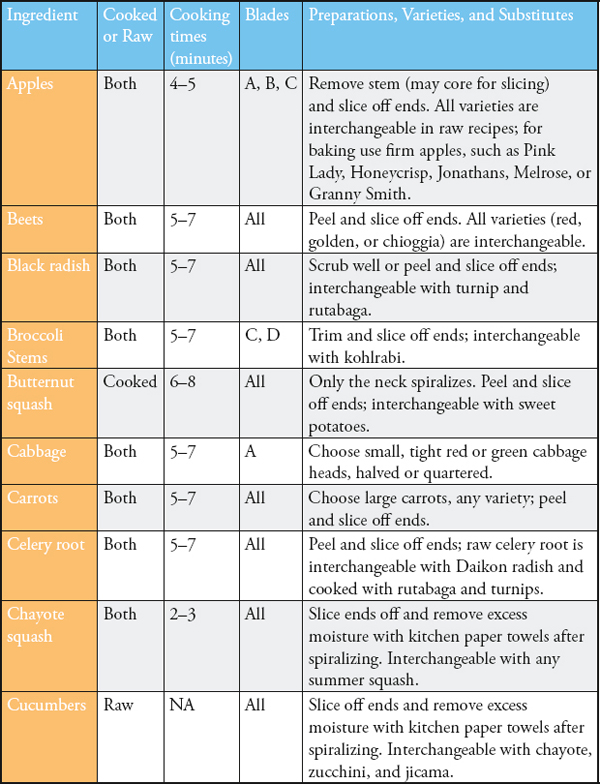
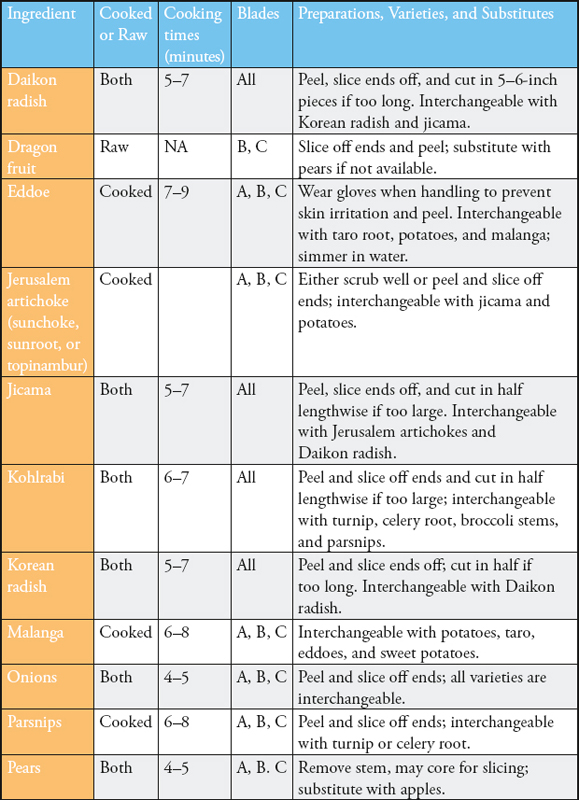

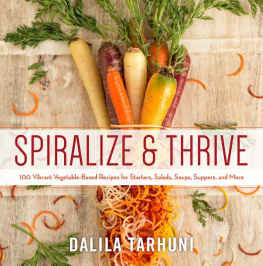
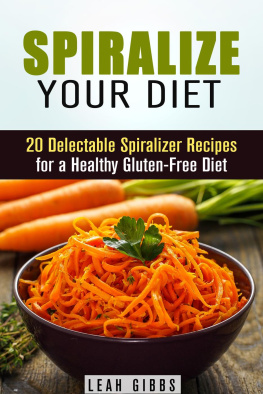


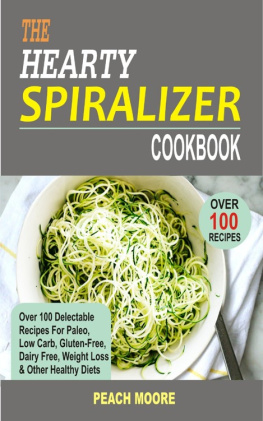
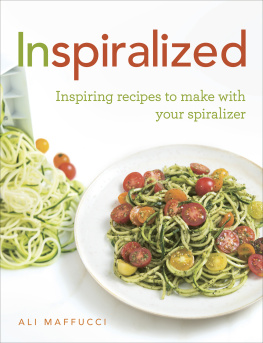
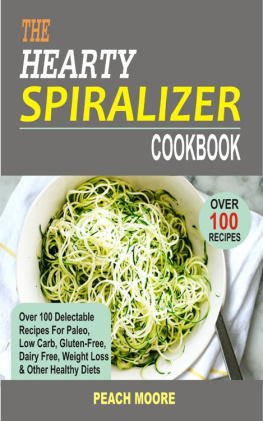
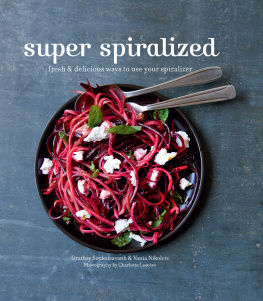
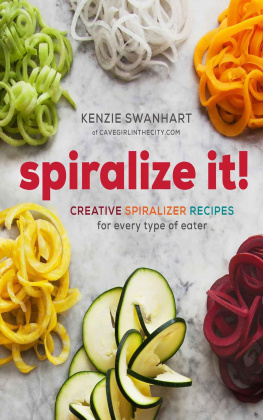

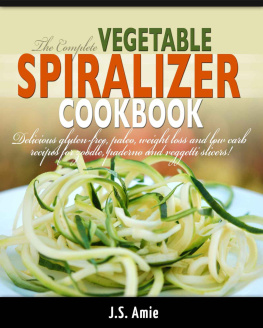


 INTRODUCTION: WHY SPIRALIZE? Including plenty of fresh, ideally locally-grown and organic produce in your daily diet is essential for good health and one simple and fun way of achieving that is by spiralizing. A Japanese invention, the spiralizer is a safer version of a mandoline slicer that produces noodle or ribbon-like strands from a variety of vegetables and fruits. Over the last few years, the spiralizers popularity has soared and it has quickly become a must-have kitchen tool, particularly for the health conscious.
INTRODUCTION: WHY SPIRALIZE? Including plenty of fresh, ideally locally-grown and organic produce in your daily diet is essential for good health and one simple and fun way of achieving that is by spiralizing. A Japanese invention, the spiralizer is a safer version of a mandoline slicer that produces noodle or ribbon-like strands from a variety of vegetables and fruits. Over the last few years, the spiralizers popularity has soared and it has quickly become a must-have kitchen tool, particularly for the health conscious. 
 The above nutritional data was calculated using the USDA National Nutrient Database for Standard Reference and is for informational purpose only.
The above nutritional data was calculated using the USDA National Nutrient Database for Standard Reference and is for informational purpose only.  BLADE TYPES AND USES Although there is a huge variety of spiralizers on the market, most of them come with three to five stainless-steel blades, either adjustable or interchangeable, that include a straight/flat blade and shredding blades in different sizes. Some of the smaller, hand-held spiralizers/vegetable cutters come with two sizes of julienne blades only.
BLADE TYPES AND USES Although there is a huge variety of spiralizers on the market, most of them come with three to five stainless-steel blades, either adjustable or interchangeable, that include a straight/flat blade and shredding blades in different sizes. Some of the smaller, hand-held spiralizers/vegetable cutters come with two sizes of julienne blades only.
